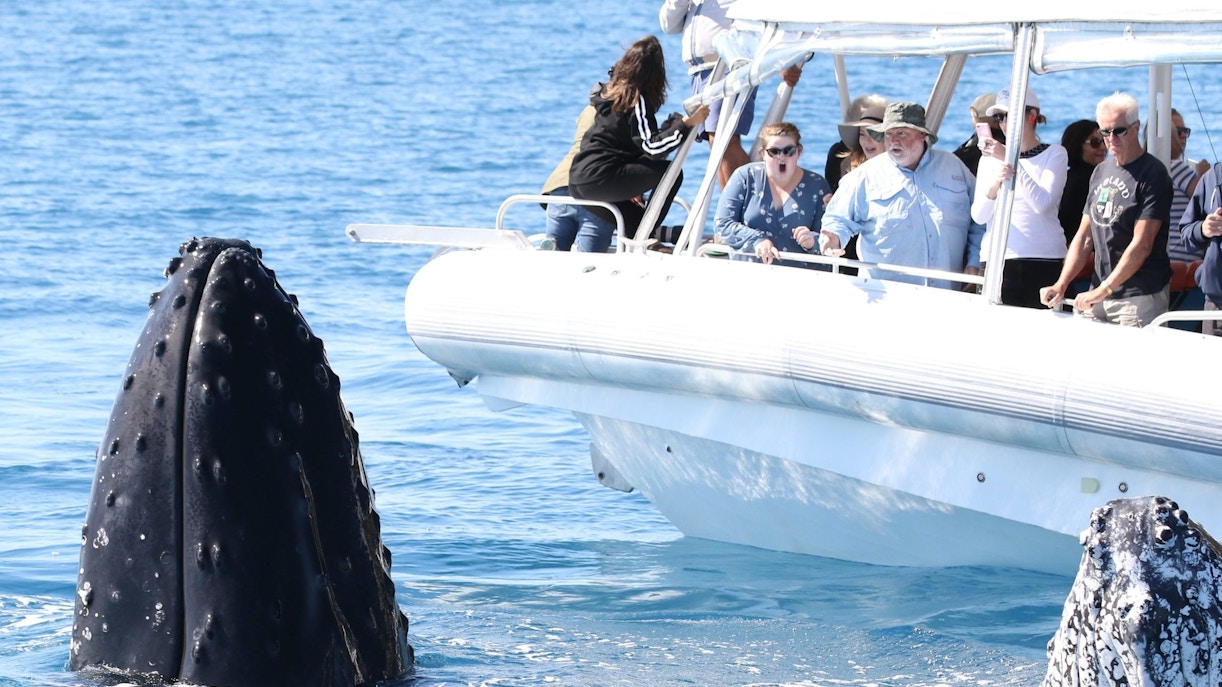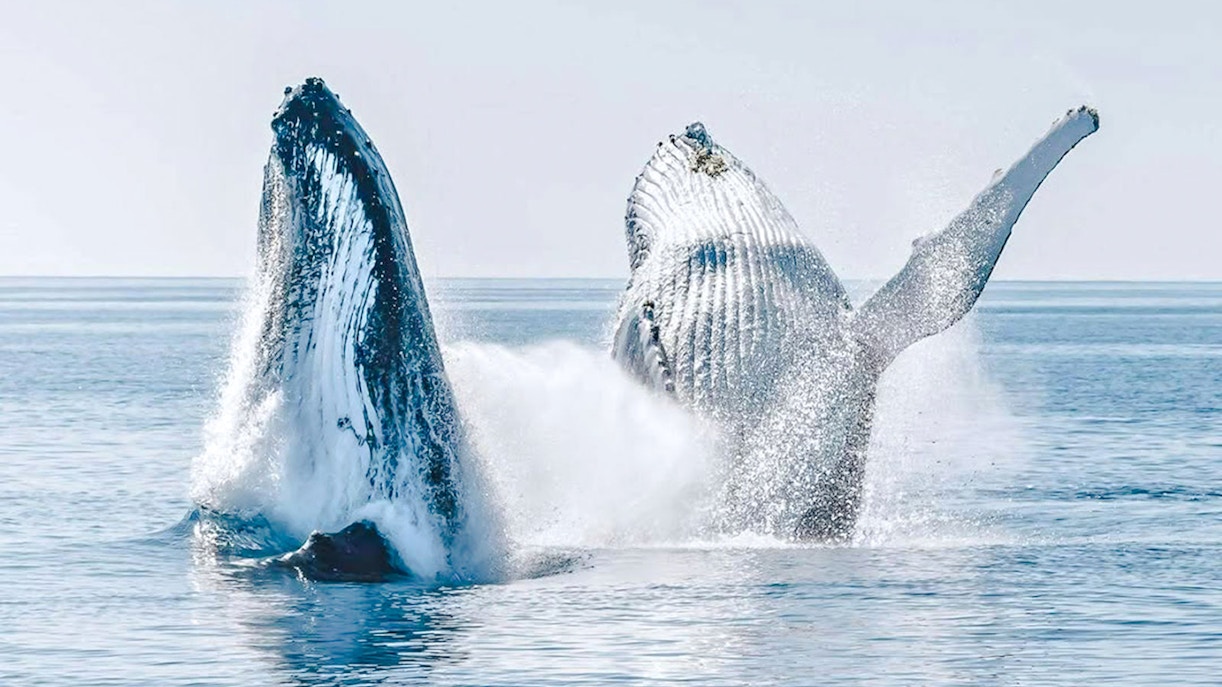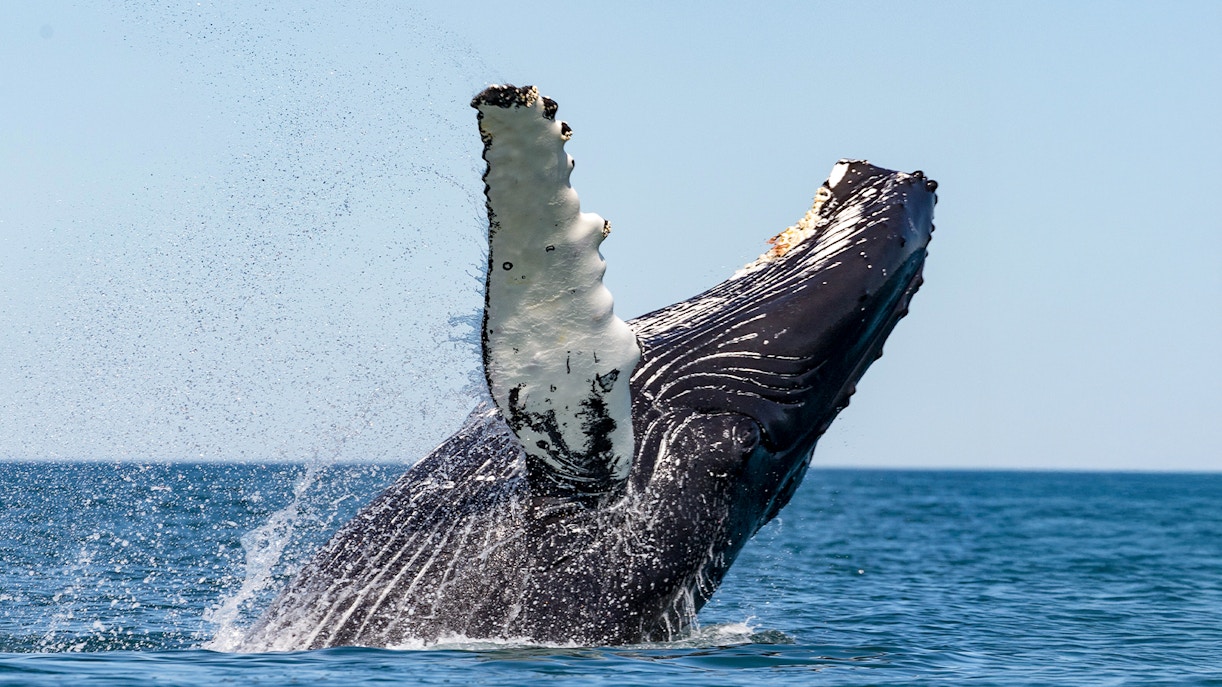Whale watching season in Gold Coast | Migration months explained
When does whale watching season start and end on the Gold Coast?

The Gold Coast whale watching season typically begins around late May to early June and runs through to early November. This timeframe aligns with the great humpback whale migration which is one of the most spectacular wildlife events on the planet.
Each year, tens of thousands of humpbacks travel north from the icy waters of Antarctica to the warmer breeding grounds along Queensland’s coast. The first whales tend to pass by the Gold Coast in early June during their northbound journey. These early sightings often feature adult males and pregnant females heading to give birth near the Great Barrier Reef. On this leg of the journey, whales move fast and sightings are more directional.
August is when the whales return south with their calves. The spring leg of the migration is slower and more surface-active. Mothers guide their newborns close to shore, and that’s when you’ll likely witness playful breaches, pectoral slaps, and tender moments between cow and calf.
Best time to see whales on the Gold Coast

- What you'll see: Adult whales and pregnant females heading north to breed. Expect fast-moving pods, powerful breaches, and directional passing within a few kilometers of shore.
- Why June–July is great: Cooler winter mornings mean calmer seas and clearer conditions, making early cruises especially pleasant.
- Crowds & atmosphere: Lighter crowds before school holidays hit. It’s ideal for quieter trips and more intimate experiences.
- When not to go: Late May can be hit-or-miss. Sightings are possible but fewer whales are around.

- What you'll see: Mothers and calves returning south; slower-moving groups, playful breaches, pectoral waves, and calf-mother interactions.
- Why August–September is great: These months are considered the peak season. You’ll get the highest whale counts around this time. Go for morning cruises to enjoy clear skies, stable ocean conditions, and longer whale encounters thanks to the slower pace of the migrating pods.
- Family-friendly timing: With spring school holidays falling in late September and early October, this period is also ideal for families.
- When to skip: By November, most whales have headed south. You’ll get fewer sightings despite pleasant weather.
Book Gold Coast Whale Watching Cruise
Frequently asked questions about whale watching Gold Coast season
The season typically runs from early June to early November. Northbound migration peaks in June–July, while the return journey south, often with calves, is best seen from August to October.
Prices vary by experience type. Basic cruises start at around AU$59–AU$69, while premium options with extras like hydrophones, snacks, or upper-deck views can range from AU$89 to AU$119.
Most tours offer a sighting guarantee. If no whales are spotted during your cruise, you’ll usually receive a free return ticket valid for up to 12 months.
Most cruises depart from Main Beach either Sea World Cruise Terminal, Marina Mirage, or Mariners Cove. Choose the one closest to where you're staying or based on the cruise inclusions.
Yes. Cruises are family-friendly and safe for kids, though young children should be supervised. Some boats have stroller access, indoor seating, and refreshments available.
Pack a windproof jacket, sunscreen, sunglasses, and a camera. If you’re prone to motion sickness, bring medication. Some cruises include tea, coffee, and biscuits, but bringing water is a good idea.
